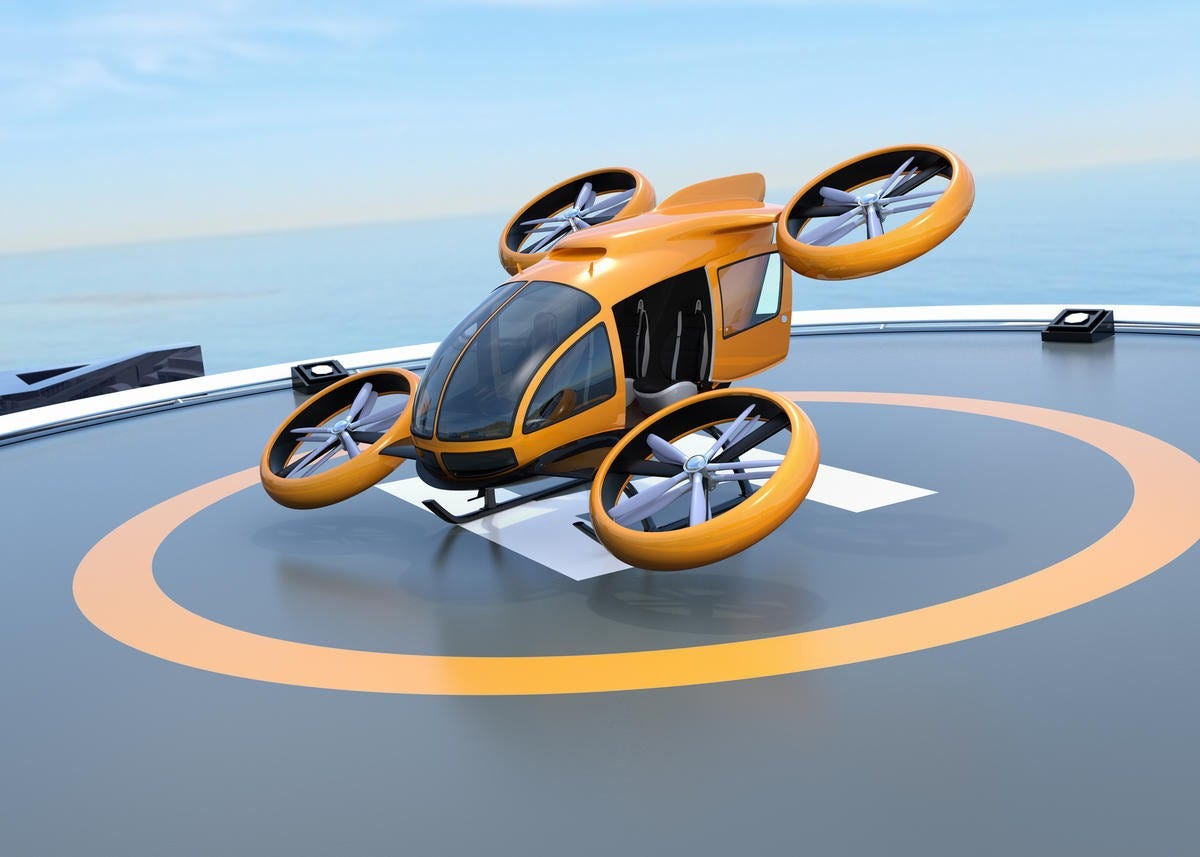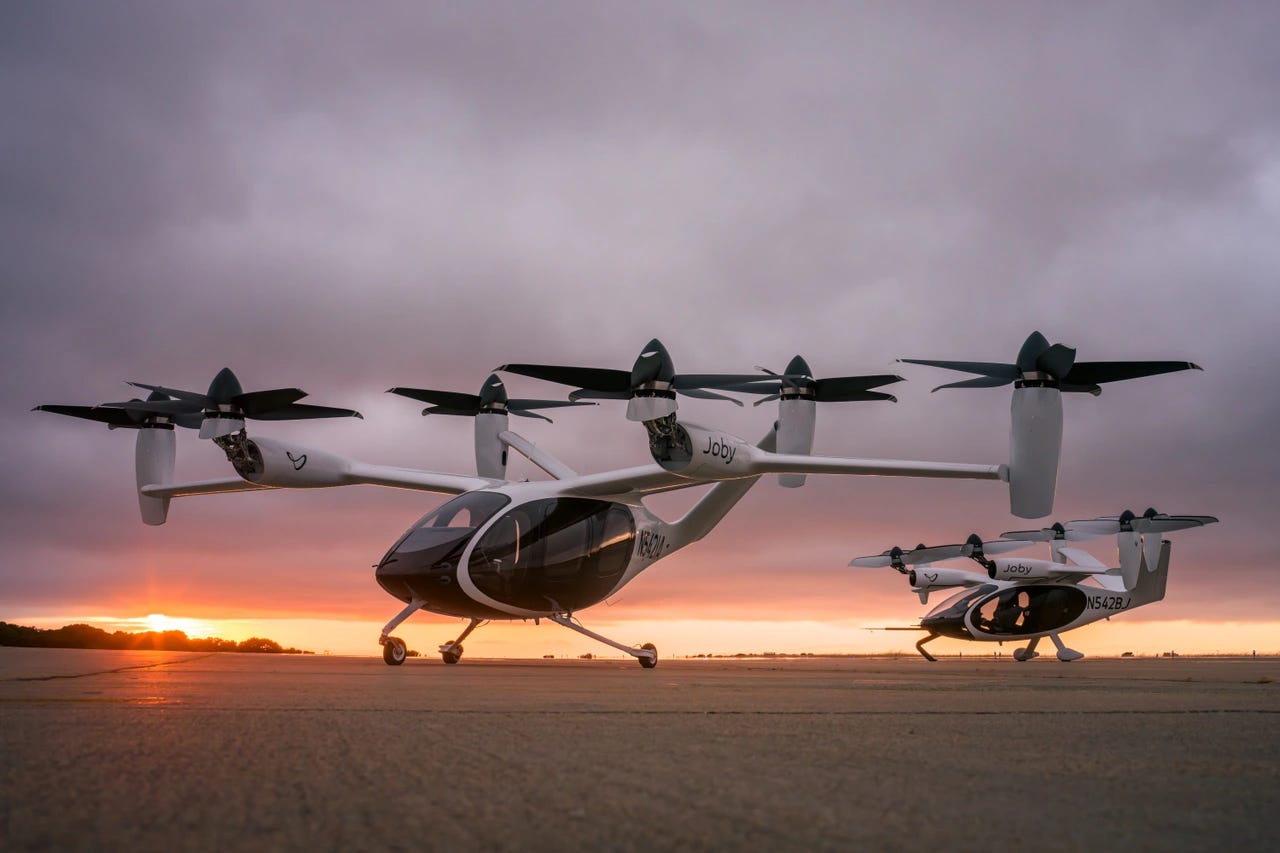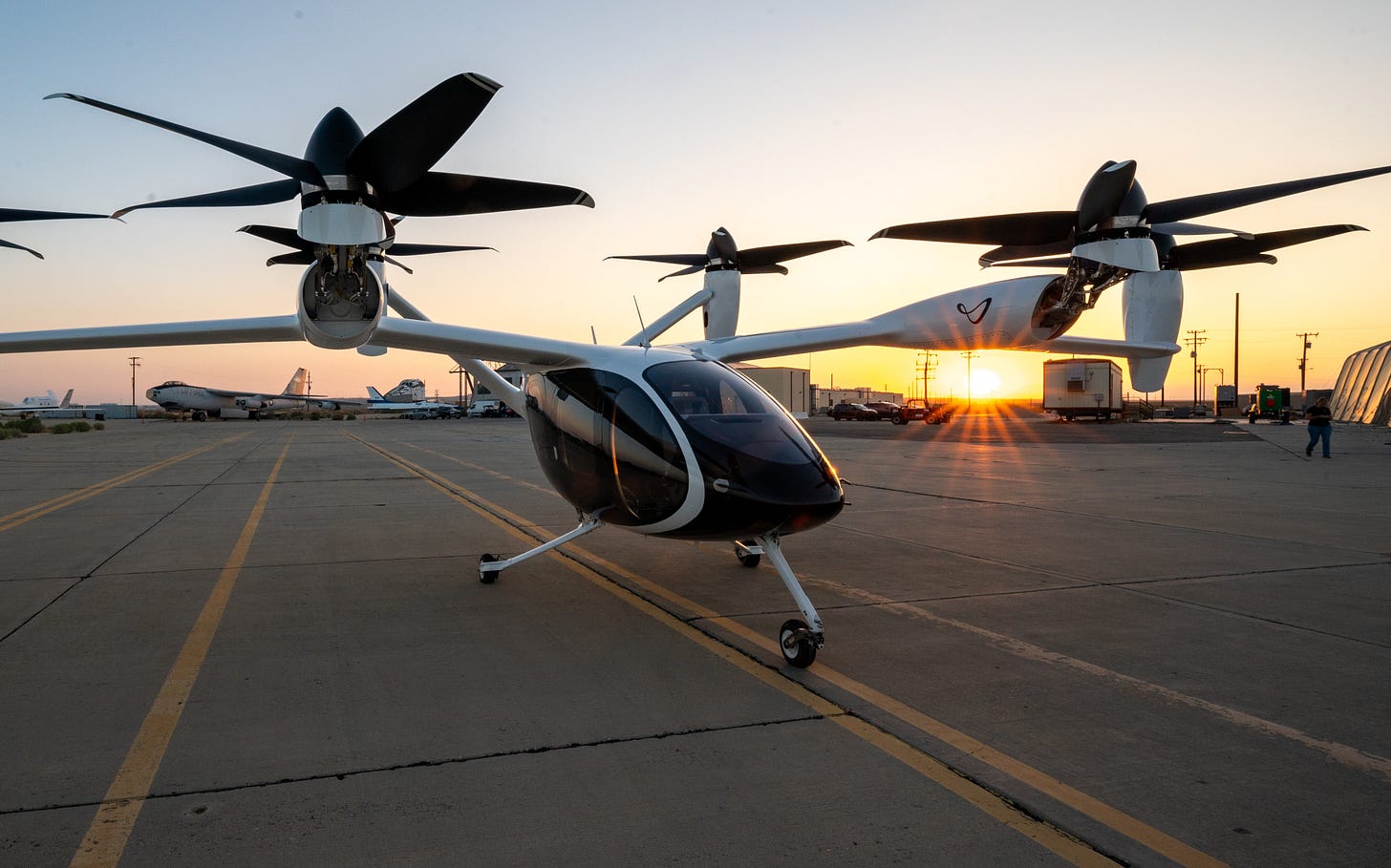Real flying cars land next year!
Fasten your seatbelt and raise your tray table. The flying car industry is huge, real and delivering in 2025.
If you think drones are fun, wait till you ride in one.
Passenger drones, or eVTOLs (electric vertical takeoff and landing), don’t exist as a service today. If you want to fly in one, you can’t. (Unless you’re a test pilot.)
But here’s the good news. The first commercial flights will go online next year (2025), and many operators will be flying by the end of 2026.
eVTOLs are the coolest new thing (with the worst name) since the smartphone. They’re a very big deal and will become a huge industry with many players.
A company called Joby Aviation is making big plans with Uber and will enable users to book eVTOL trips through the regular Uber app. Joby is also working with Delta Airlines to introduce eVTOLs at airports and elsewhere. Their aircraft may be the first used commercially (in Dubai, possibly next year).
Archer Aviation is already certified by the FAA to launch an air taxi network in Los Angeles, California (a city that just this week got full self-driving Waymo service without first going on a waitlist).
eVTOL-specific companies like EHang, Eve Air Mobility, Vertical Aerospace, Volocopter, Beta Technologies, Wisk Aero, Eve Air Mobility, and others are also taking orders, getting certifications, and preparing to launch within a year or two.
Big aerospace companies, including Airbus, Boeing, Bell, Embraer, and Honeywell, are making eVTOLs, developing eVTOL technology, or partnering with eVTOL companies.
Car companies are involved in eVTOL design and production, including Hyundai, Toyota, Honda, and General Motors.
And there are at least 30 more companies I haven’t mentioned.
Different eVTOL designs from different companies use different flight mechanisms and designs to achieve vertical takeoff and landing capabilities. These include multicopters without wings, vectored thrust designs with tilt-rotors or tilt-wings, lift and cruise systems, and hybrid configurations. Wing designs range from wingless to tandem, box, and enclosing wings.
Power sources are primarily batteries, with some designs exploring hydrogen fuel cells for increased range.
There are several ways to think about an eVTOL. One comparison is that it’s like an electric helicopter. While helicopters typically have a single main set of propellers, eVTOLs usually have at least four and as many as eight. Because the propellers are smaller and the motors electric, they’re quieter than helicopters.
Another way to think about an eVTOL is that it’s a passenger drone. It’s like a consumer DJI-like camera drone but big enough to carry people.
Yet another conceptualization is that they’re flying robots that carry people, using AI to do most of the flying and navigational work.
Finally, the best understanding—especially for the eVTOLs we’ll have in a few years—is that they’re self-driving cars that fly. Initial rollouts will see eVTOLs with pilots, but those will be phased out in favor of autonomous flying in a few years.
Full self-flying is a capability for the future. But even next year’s eVTOLs will be highly computerized, using AI for navigation and autonomous flight, route optimization, obstacle avoidance, and complex takeoff and landing maneuvers.
For traffic management, AI-powered systems handle air traffic control and collision prediction. AI also enhances performance by optimizing energy usage and enabling predictive maintenance.
AI even enhances eVTOL pilot training through adaptive learning systems that personalize content based on individual performance. Machine learning algorithms analyze pilot data, provide real-time feedback, and generate tailored scenarios.
Even my cheap DJI drone can run pre-programmed routines, avoid obstacles in all directions, “return to home” by itself, land by itself, stabilize itself in the wind, and other feats. eVTOLs will do all this and much more.
Are you lovin’ it?
If you like the free version of Machine Society, you’ll love the paid version! I’m committed to making the free version super valuable to readers. As a free subscriber, you get everything minus the last bits of about half the columns I write. I make sure the non-paywalled parts of my columns are valuable by themselves and packed with information and insights. Of course, the paid version offers a little more.
If you’d like to subscribe to the paid version, it costs $4.17 per month, about the cost of a large order of fries at McDonald’s. Click the button below to give the paid version a try!
Dispatches from the future
What if robots learned the same way genAI chatbots do?
MIT researchers are pioneering a new method for robot training that could create an all-purpose robot brain for all robot types. Read my opinion column at Computerworld.
Plus:
Agentic AI swarms are headed your way
Who needs a humanoid robot when everything is already robotic?
Skills shortage directly tied to financial loss in data breaches
Augmented reality screens are a feature, not a product
Why you should want face-recognition glasses
Why safeguarding sensitive data is so crucial
The cybersecurity skills gap contributed to a $1.76 million increase in average breach costs
My location: El Sargento, Mexico
(Why Mike is always traveling.)












Wondering what I’d use this for. It’s currently 22-25 minutes for me to get to O’Hare by Uber. My sister lives about 1.10 hours from me, but would I want to spend, what, $100 bucks to visit my sister? Curious what sort of trip would be worth the cost.